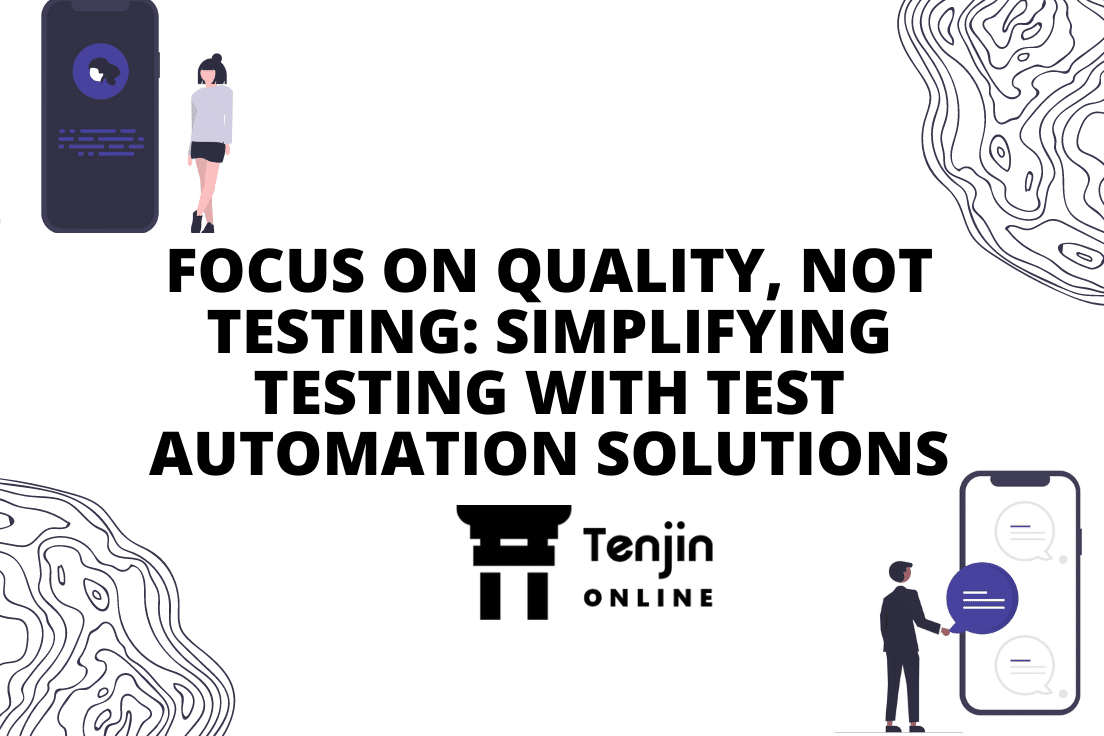
‘Testing’ and ‘quality’ are often used as synonymous; if your definition of quality is equivalent to ‘no bugs/errors,’ then it could be one of the major disasters of your testing career. Testing and quality of the app are interconnected; however, they are not the same. If one tries to consider an app of high quality with the ‘zero’ bug status during testing, it is the wrong approach. Sometimes, the app may receive major criticism from the users post release. Then how do you work on building flawlessly working apps with the help of testing?
With the emergence of DevOps approach, the process of planning, executing, monitoring, and releasing the product has undergone a serious change. Developers and testers work together from the beginning, allowing testing to be conducted simultaneously to the development process. In this new arrangement, testers are involved right from the start, hence, they understand and test the app from the user’s perspective. Mere code testing and functionality checking to find bugs is not the plan, a deeper understanding of the user’s expectations and testing the app to meet up to that expectations is what the new approach is all about. Testing the app in this way will improve the quality and save the organization from any misfortunes. Hence, it is a wise move to always focus on quality and not testing; testing activities can be modified or upgraded based on the quality requirements.
Shifting from testing to quality assurance
The software paradigm has witnessed a major shift in the past few years; with this shift, the development and testing processes have also undergone major changes. Moving from sheer testing practices, organizations are now focusing on quality assurance, the systematic process to determine if the software meets all the specified requirements.
In the QA process, the whole testing activity is revised to introduce testing in the earlier stages of development right from idea formulation, strategizing, development, and execution, until deployment and delivery. The executable codes and the functionality are tested over a diverse range of devices to check if it is working perfectly.
Here, the emphasize is laid on ensuring the quality of the software is top-notch, not just going by identifying and resolving bugs. In the QA process, testing is carried out in advanced environment of DevOps, and CI/CD frameworks, among others. Testing is carried out to create software that is just as the users would prefer it to be. Here, the user expectation is bought into consideration and the process has feedback feature to rework on the parts that the users are not satisfied with.
Today, organizations are moving towards quality assurance approach to improve the software quality. Testing forms an integral part of the entire QA process where the functional and non-functional parameters are tested to identify all the errors. Testing along with understanding user requirements, continuous monitoring, working on feedbacks, and improving the user experience forms the core of quality assurance.
Simplifying Testing with Test Automation Solutions
To yield the maximum benefit from testing solutions, organizations are automating the process. Automated process can ease the tedious, mundane, repetitive, and time-consuming nature of manual testing. It simplifies the process, reduces effort, increases efficiency, shortens release cycles, and reduces the cost considerably.
Automating tests can be performed by implementing a reliable and efficient test automation tool. An automated testing tool can replay pre-recorded and predefined actions, correlate the results to the desired outcomes, and report the success or failure of tests to a professional tester. Once automated tests are created, their replication becomes easy, and they can, thus, be extended towards the accomplishment of tasks that are manually inexecutable.
Automated tools are used to write and run test cases, including testing characteristics such as loading, stress, and performance. The automated process is intended to increase efficiency, effectiveness, and precision. It’s especially well-suited to handle repetitive tasks and functions that are difficult to test manually.
Some of the key benefits of implementing test automation
When an app is released in the market, there might be an instant surge in the number of installs initially, however, the numbers may be seen dropping not soon when the app has been used by users and not approved. The concept and innovative approach of the app may attract the users, but if it is buggy and glitchy, users may have no tolerance and soon uninstall it. With the highly competitive market, organizations cannot afford to lose any users, who may turn to their competitors. To retain the existing users and attract new ones, organizations should invest in test automation solutions to ensure the quality is high. Here are some of the benefits of implementing test automation.
An exponential increase in test coverage
Automated software testing can expand the depth and scope of tests. Unattended testing allows for the execution of long and complex tests that are often ignored during manual testing. They can even be performed on multiple devices with different setups.
Thousands of different complex test cases can be easily executed during each test run, providing test coverage that is impossible to achieve with manual tests.
Improved accuracy
During repetitive manual testing, even the most diligent tester will make errors. Automated tests repeat the same steps every time they’re run, and they never forget to keep detailed records of their findings. Testers who are no longer tasked with performing repetitive manual tests have more time to develop new automated software tests and deal with more complex features.
Time-saving
If your testing process is automated, your team will spend less time verifying and testing newly developed features, reducing time significantly.
Access to faster feedback
Test automation allows you to reduce the time it takes to get feedback on recently designed software and provides speedier verification for different phases of your product’s lifecycle.
Test automation is best suited for all types of organisations because it facilitates the early identification of errors or flaws during the testing stages of software, increasing the productivity and, ultimately, the efficiency of the team.
Reusability
During the setup phase, automation testing necessitates a significant investment of time and resources. Once it’s in place, developers will have a repository that can be reused in the future to test different versions of apps and software.
Flexible testing on multiple platforms
Automated testing allows testers to run tests simultaneously on thousands of browsers, operating systems, and devices. It provides you with flexibility to test on multiple platforms for well-rounded feedback.
Increasing ROI
It takes a long time to get a software product to market because of the repetitive nature of manual testing.
By taking care of repetitive tasks with fewer resources onboard, automation testing can help businesses reduce time-to-market and launch an error-free product.
Conclusion
The complexity of today’s advanced technologies makes it difficult to deliver high-quality applications quickly, especially when your products must undergo extensive testing as part of the release process. Testing alone isn’t responsible for the quality of the software, it depends on the overall QA process to ensure the quality is top-notch. Hence, organizations are moving from testing to QA, where testing is an inevitable part of the QA process. The need to focus on quality and not testing is mentioned in the article in detail.



Leave a Reply
You must be logged in to post a comment.